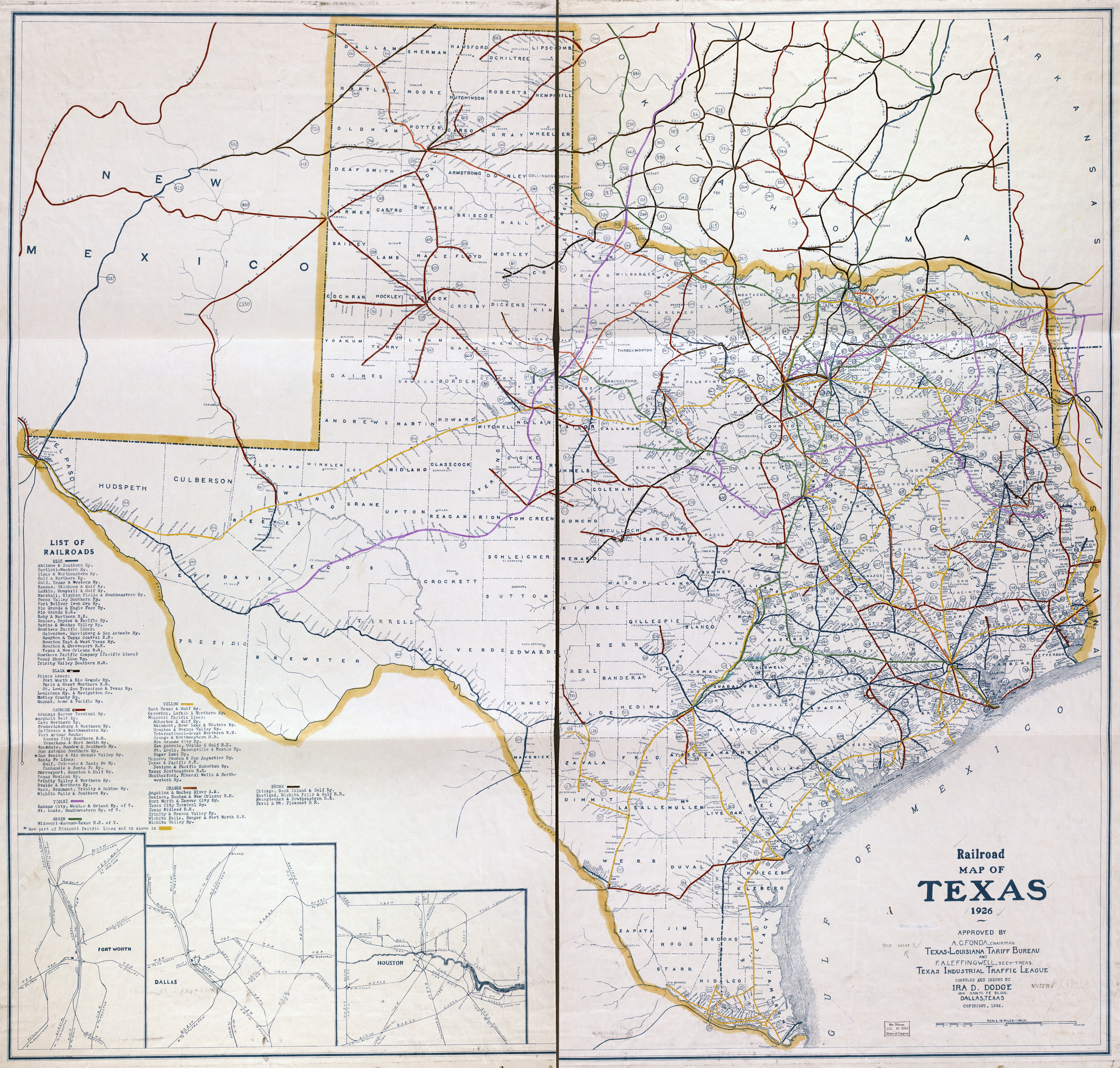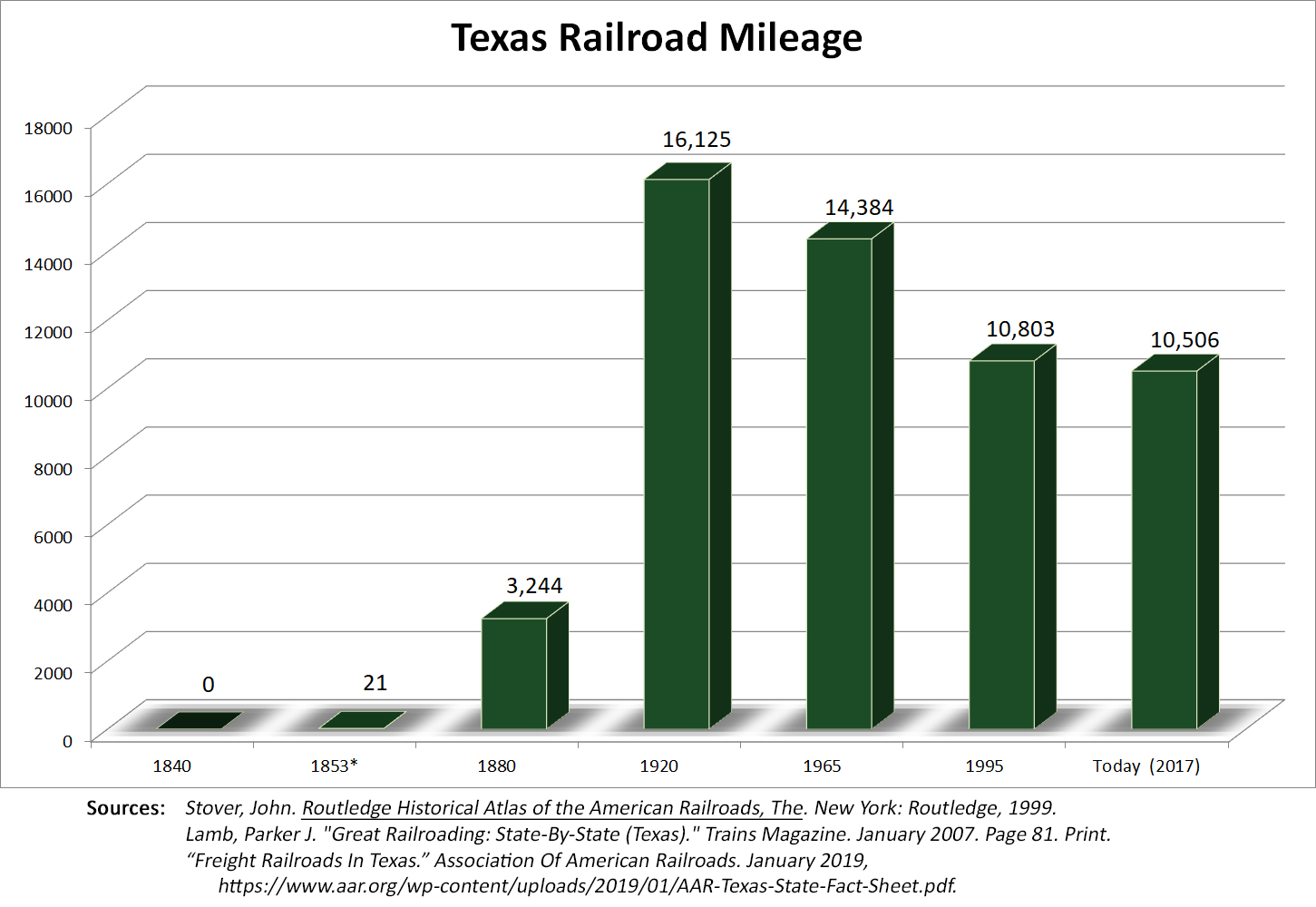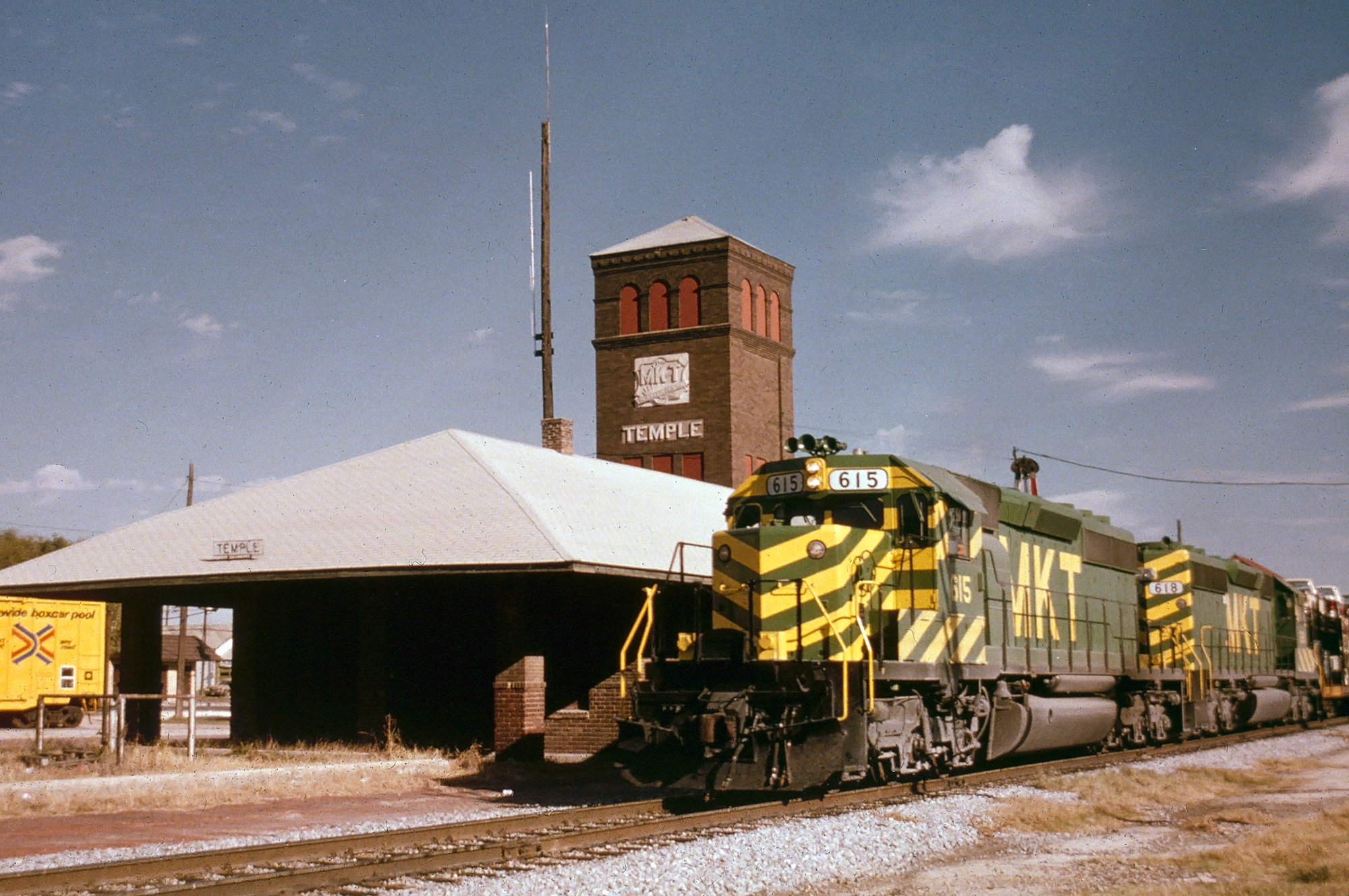- Home ›
- The States ›
- Texas
Texas Railroads: Map, History, Abandoned Lines
Last revised: October 16, 2024
By: Adam Burns
Like everything else about the Lone Star State, Texas railroads are big;
in terms of route mileage nothing can top Texas and the state has key
main lines running every which direction (UP’s Sunset Route running between Los Angeles and New Orleans
and BNSF’s Transcon running between Chicago and Los Angeles are just a
few).
Historically, virtually every well-known Southwestern and several Midwestern railroads reached Texas looking to tap its rich oil reserves found throughout the state and the chemical industries located along the Gulf Coast (such as at Galveston/Houston).
Today, while the Lone Star State has seen over 35% of its peak trackage abandoned, or roughly 6,000 miles. Much of trackage shed was redundant or unprofitable agricultural branches.
One notable abandonment was the Rock Island's fabled "Choctaw Route" between Tucumcari, New Mexico and Memphis, Tennessee.
This line traversed the Northern Panhandle via Amarillo and was abandoned after its 1980 liquidation.
Despite this, incredibly the state still boasts over 10,000 miles of rails and continues to be an important generator of traffic for three Class Is (BNSF, UP, and Kansas City Southern), two Class IIs (regionals), and far too many short lines to list here.
Finally, please be aware that there several links listed within the article here that relate to Texas railroads, such as the state's history and present-day rail operations.
Photos
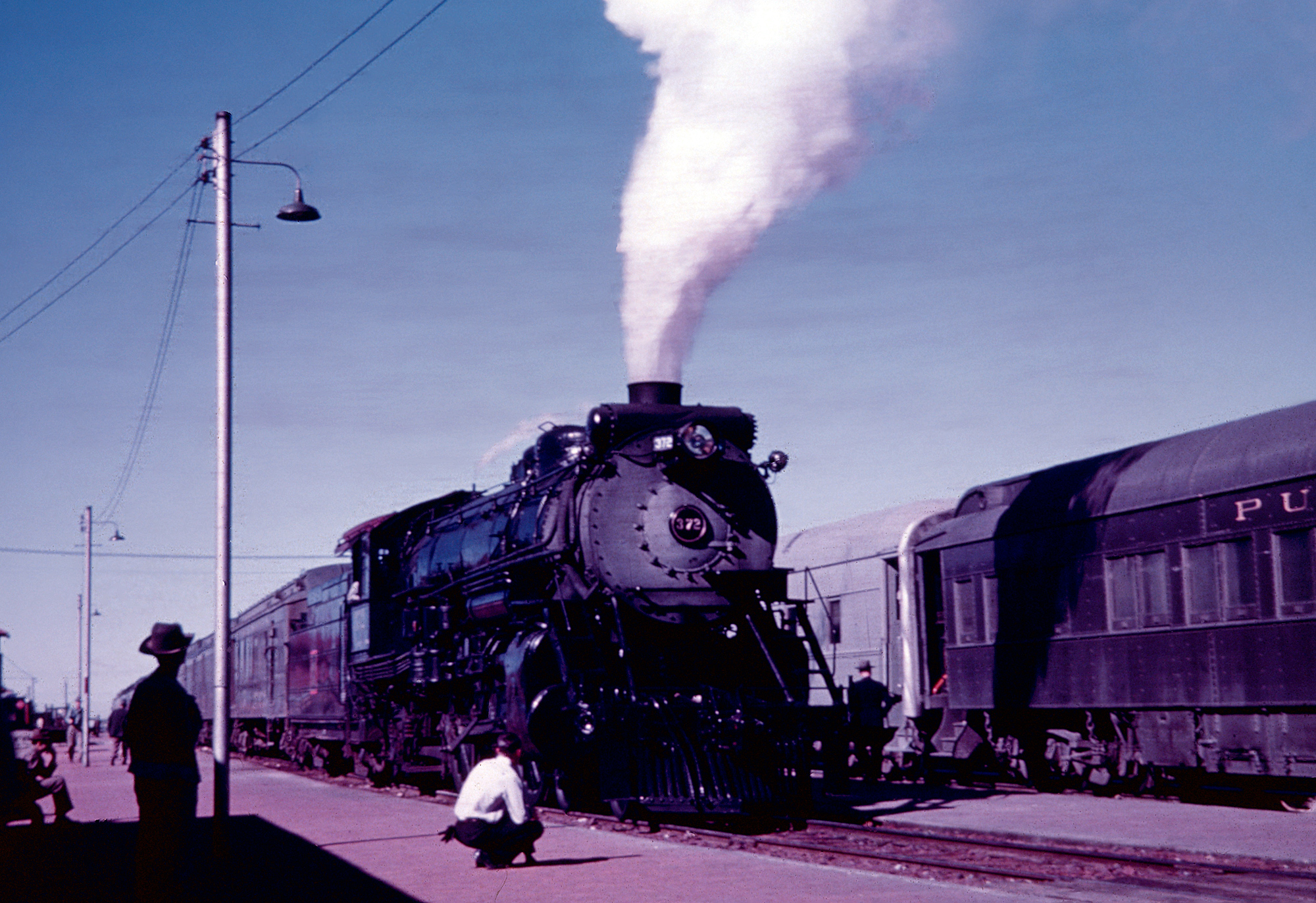 Colorado & Southern (Burlington) 4-6-2 #372 has arrived at Galveston Union Station during the 1950s. Ed Olsen photo. American-Rails.com collection.
Colorado & Southern (Burlington) 4-6-2 #372 has arrived at Galveston Union Station during the 1950s. Ed Olsen photo. American-Rails.com collection.History
Texas railroads date back to February 11, 1850 when the Buffalo Bayou, Brazos & Colorado Railway was chartered courtesy of its founder, Sidney Sherman.
Three years later, by 1853, the railroad had extended 20 miles from Harrisburg, near Houston to Austin. By 1860 the railroad had extended to reach such towns as Alleyton, Eagle Lake, Richmond, and Brazos.
The line fell into bankruptcy in the mid-1860s although it was reincorporated in 1868 as the Galveston, Harrisburg, & San Antonio Railroad better known as the Harrisburg Railroad.
At A Glance
The new owners poured much needed capital into the company and extended it to San Antonio. By July of 1881 the GH&SA had come under the ownership of the Southern Pacific, which used the company to build a secondary main line to the port city of New Orleans.
The GH&SA remained an operating entity through the late winter of 1927 when it was leased to the Texas & New Orleans Railroad, another SP subsidiary.
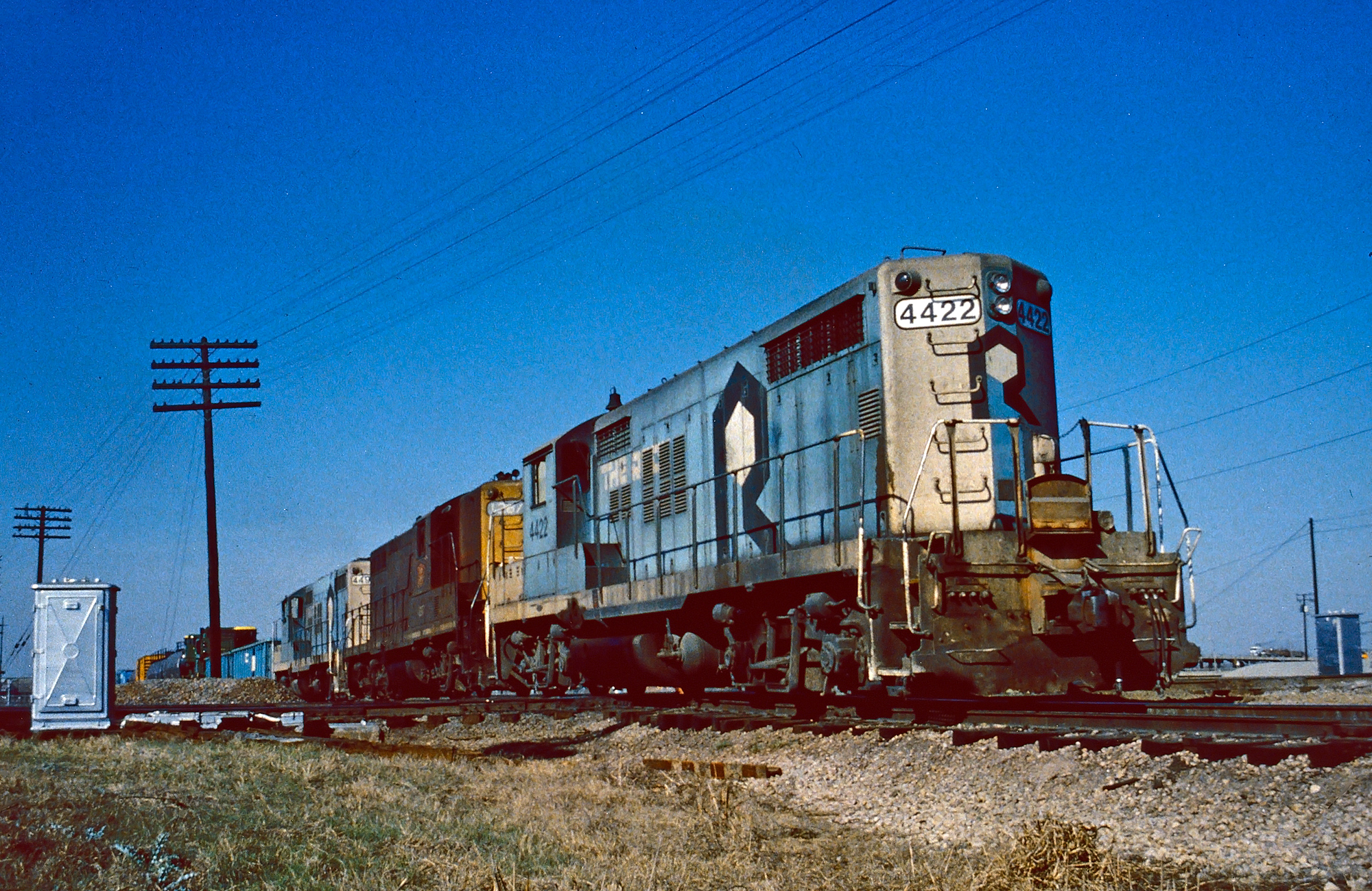 Rock Island GP7R #4422, GP7 #1257, and another GP7R lead a mixed freight through Fort Worth, Texas, circa 1979. Mike Bledsoe photo. American-Rails.com collection.
Rock Island GP7R #4422, GP7 #1257, and another GP7R lead a mixed freight through Fort Worth, Texas, circa 1979. Mike Bledsoe photo. American-Rails.com collection.Due to Texas’ strategic location, large size, and sources of traffic it, of course, did not take long for other railroads to begin tapping and building aggressively into the state.
In the years following the arrival of the Buffalo Bayou, Brazos & Colorado several other, and more celebrated, lines built into Texas.
Of all of these railroads, the SP and MP controlled the majority of the route miles in Texas connecting to virtually every major city in the state with a significant presence in lucrative East Texas where the chemical industry sprang up.
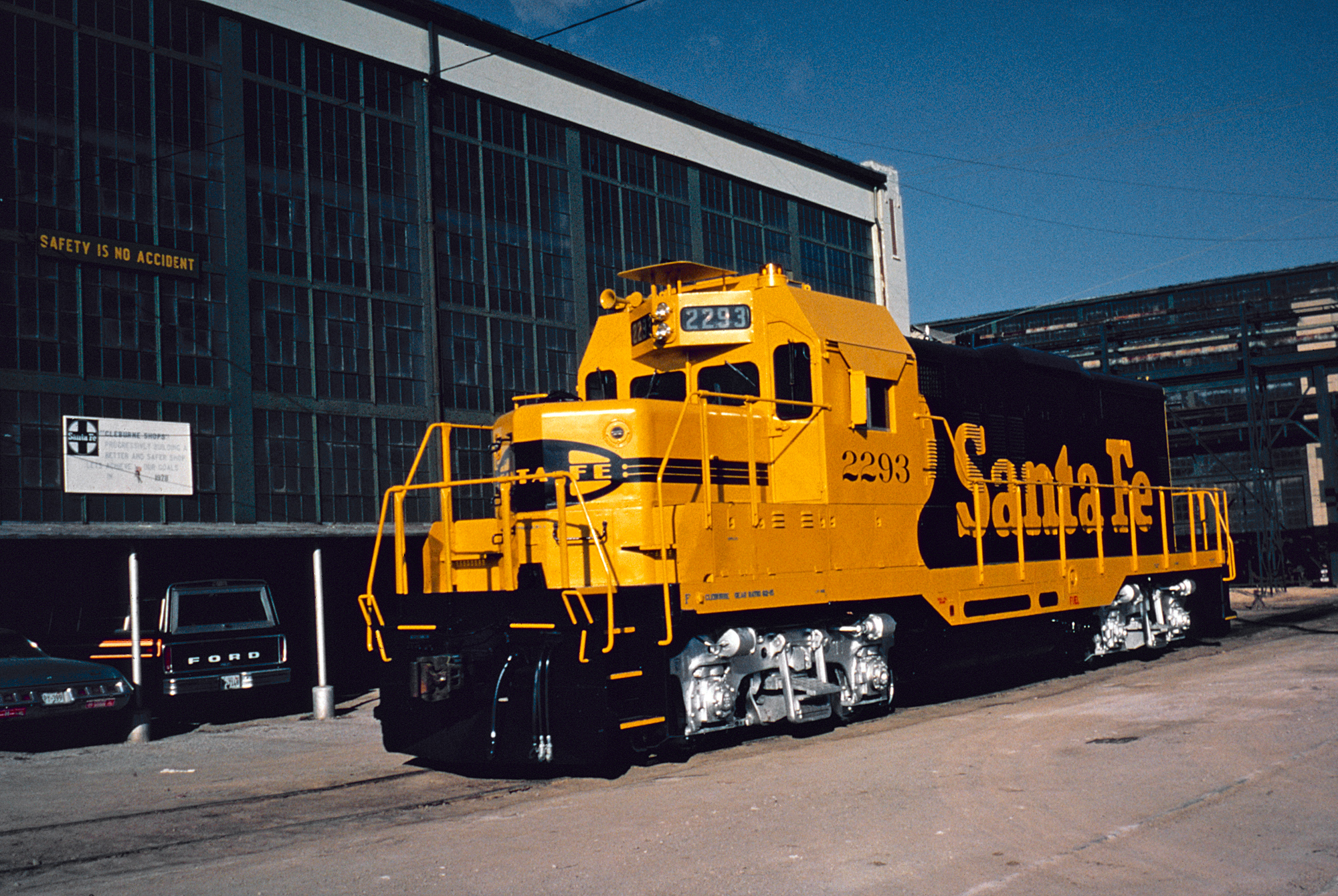 Santa Fe GP9u #2293 just released from the Cleburne Shops (Texas); December, 1979. American-Rails.com collection.
Santa Fe GP9u #2293 just released from the Cleburne Shops (Texas); December, 1979. American-Rails.com collection.Both railroads served all of the state’s key markets and both of whom also operated key main lines to reach such cities as Houston, San Antonio and Dallas/Fort Worth (Southern Pacific’s Sunset Route and Missouri Pacific’s Texas & Pacific main line).
Both railroads were fierce competitors in the Southwest, particularly in Texas, dating all of the way back to the late 19th century when Jay Gould controlled the MP and Collis P. Huntington the SP.
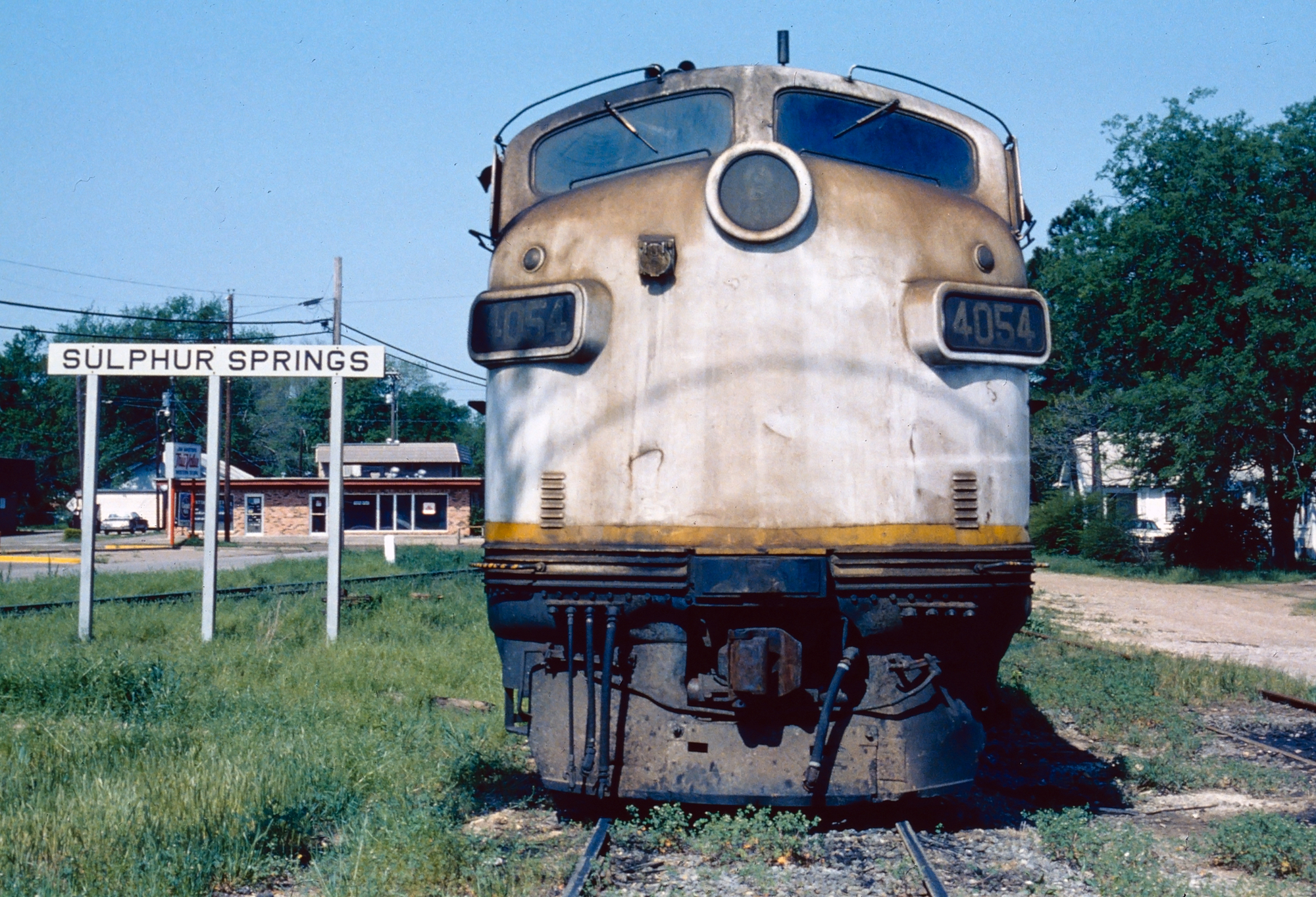 Kansas City Southern F7A #4054 and other Fs are tied down in their typical spot behind the depot at Sulphur Springs, Texas in the summer of 1983. These were the last Fs used in freight service on a Class I. They handled lignite to TXU's coal-fired power plant in Pittsburg, which was carried to the facility by the company's own electrified railroad. Mike Bledsoe photo. American-Rails.com collection.
Kansas City Southern F7A #4054 and other Fs are tied down in their typical spot behind the depot at Sulphur Springs, Texas in the summer of 1983. These were the last Fs used in freight service on a Class I. They handled lignite to TXU's coal-fired power plant in Pittsburg, which was carried to the facility by the company's own electrified railroad. Mike Bledsoe photo. American-Rails.com collection.Today, Texas railroads are mostly the domain of Union Pacific which controls roughly 51% of the trackage in the state, which is interesting considering that the UP never had a presence at all in the Lone Star State until it purchased the MoPac and later, SP.
State Map (1926)
Current Railroads
- BNSF Railway
- Union Pacific
- Alamo Gulf Coast Railroad
- Alliance Terminal Railroad
- Angelina & Neches River Railroad
- Austin Western Railroad
- Big Springs Railroad
- Blacklands Railroad
- Border Pacific Railroad
- Brownsville & Rio Grande International Railroad
- CMC Railroad
- Corpus Christi Terminal
- Dallas, Garland & Northeastern Railroad
- Fort Worth & Western Railroad
- Gardendale Railroad
- Georgetown Railroad
- Hondo Railway
- Kiamichi Railroad
- Lubbock & Western Railway
- Moscow, Camden & San Augustine Railroad
- Orange Port Terminal Railway
- Panhandle Northern Railway
- Pecos Valley Southern Railway
- Point Comfort & Northern Railway
- Port Terminal Railroad Association
- Rio Valley Switching Company
- RJ Corman - Texas Lines
- Rusk, Palestine & Pacific Railroad
- Sabine River & Northern Railroad
- San Antonio Central Railroad
- South Plains Lamesa Railroad
- Southern Switching Company
- Temple & Central Texas Railway
- Texas Central Business Lines
- Texas, Gonzales & Northern Railway
- Texas & Northern Railway
- Texas & New Mexico Railway
- Texas North Western Railway
- Texas Northeastern Railroad
- Texas Pacifico Transportation
- Texas Rock Crusher Railway
- Timber Rock Railroad
- Texas South-Eastern Railroad
- Western Rail Road
- Wichita, Tillman & Jackson Railway
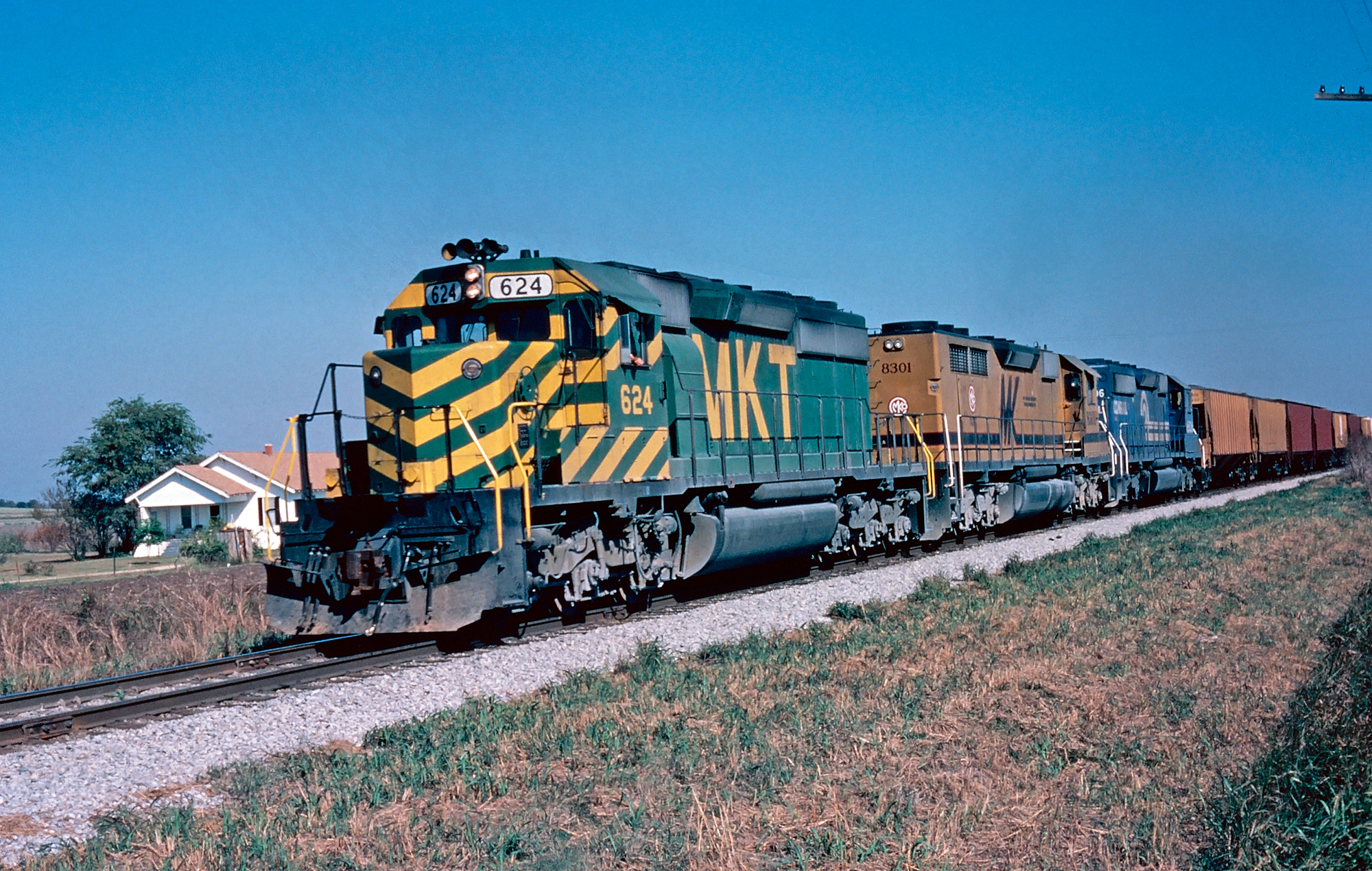 Katy SD40-2 #624, Morrison-Knudsen SD45Xm #8301 (former SD45X demonstrator #4203), and a Conrail unit in service between Taylor and Elgin, Texas, in the summer of 1984. Mike Bledsoe photo. American-Rails.com collection.
Katy SD40-2 #624, Morrison-Knudsen SD45Xm #8301 (former SD45X demonstrator #4203), and a Conrail unit in service between Taylor and Elgin, Texas, in the summer of 1984. Mike Bledsoe photo. American-Rails.com collection.In total, railroads in Texas today still operate over 10,000 miles of trackage although this is down from the peak of 16,125 miles during the industry's height that occurred during the 1920s.
Abandoned Lines
The state of Texas has lost more than 5,000 route miles since the 1920's although when looking at the big picture, its peak mileage has only declined 53.4%.
Much of the state's losses have come by way of secondary, agricultural corridors operated by the Southern Pacific, Santa Fe, and Missouri Pacific serving small farming towns like Lamesa, Sonora, Henrietta, and Glenfora.
Most of Texas's through routes remain quite active in the modern era; the one notable loss was Rock Island's "Choctaw Route" through the Northern Panhandle (Amarillo) which one linked Memphis, Tennessee with the Southwest via Tucumcari, New Mexico (SP).
If you enjoy researching abandoned rights-of-way (ROW) there are plenty throughout Texas to peruse. The easiest way to do so is utilize the United States Geological Survey's (USGS) Historical Topographic Map Explorer featured in the right column of this page.
From that point, cross-reference the rail line against Google Maps (satellite view) of any you know of or believe which are abandoned. This is a quick and handy way to locate ROW's.
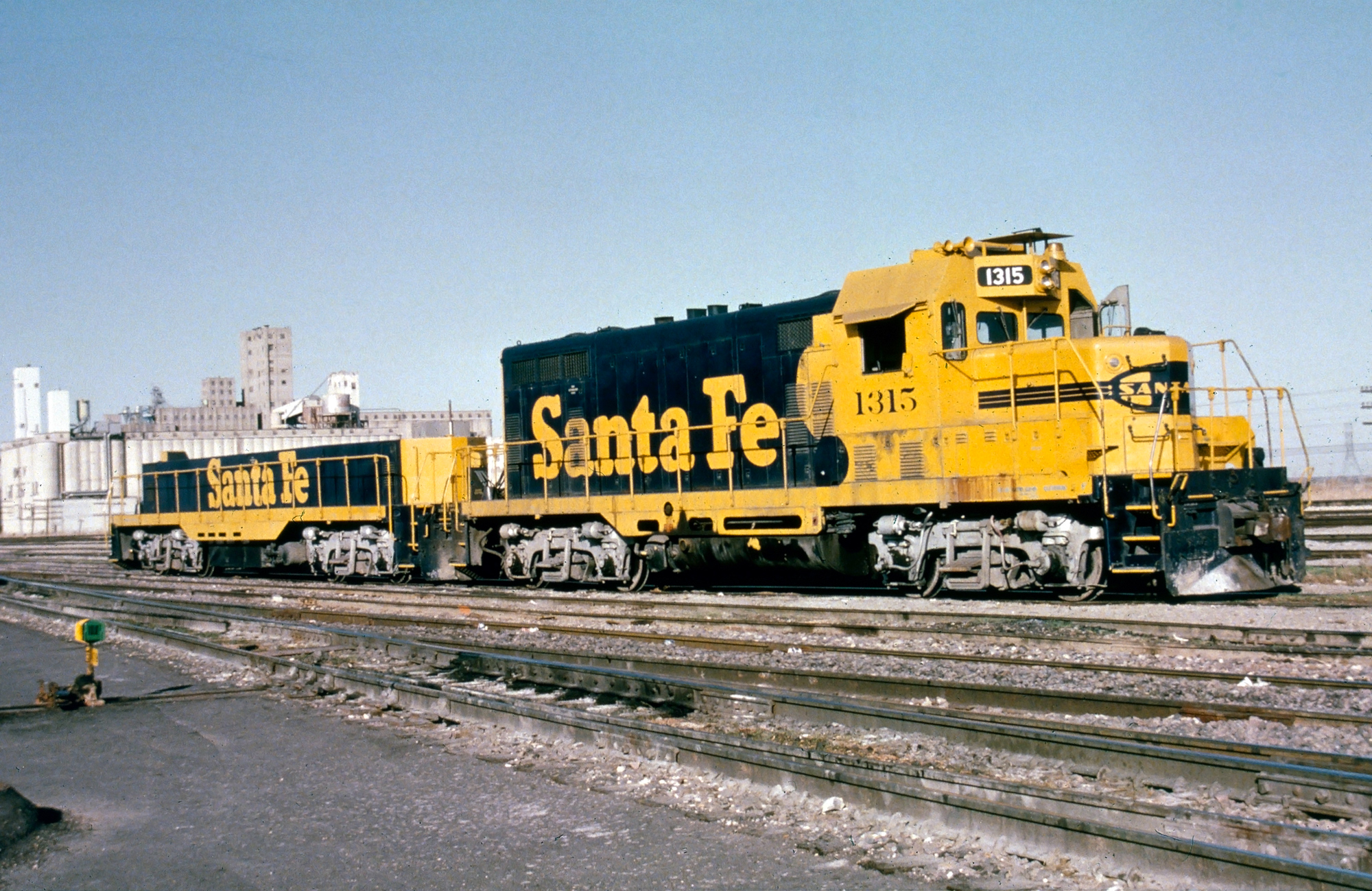 One of the Santa Fe's rebuilt GP7's, #1315, and a slug, were photographed here outside of the Argent Mills plant in Saginaw, Texas, circa 1983. Mike Bledsoe photo. American-Rails.com collection.
One of the Santa Fe's rebuilt GP7's, #1315, and a slug, were photographed here outside of the Argent Mills plant in Saginaw, Texas, circa 1983. Mike Bledsoe photo. American-Rails.com collection.Still, the state retains about 65% of its railroad infrastructure, mostly due to the fact that several important routes pass through Texas, such as those mentioned at the beginning of this article.
State Mileage Chart
First Railroad
* Texas's first railroad put into operation was the Buffalo Bayou, Brazos, & Colorado Railway (BBB&C) chartered on February 11, 1850. By August of 1853, 21 miles was open from Harrisburg to Stafford's Point. Also known as the Harrisburg Railroad it was reorganized as the Galveston, Harrisburg, & San Antonio in 1870. An expanding Southern Pacific, led by Collis P. Huntington, acquired the road in 1881.
Much of the 6,000 miles
that has been abandoned are low-density secondary and branch lines,
along with part of the Katy which the UP abandoned after acquiring
ownership in the late 1980s.
For more information on Texas railroads, in terms of route mileage over the years please take a look at the chart above.
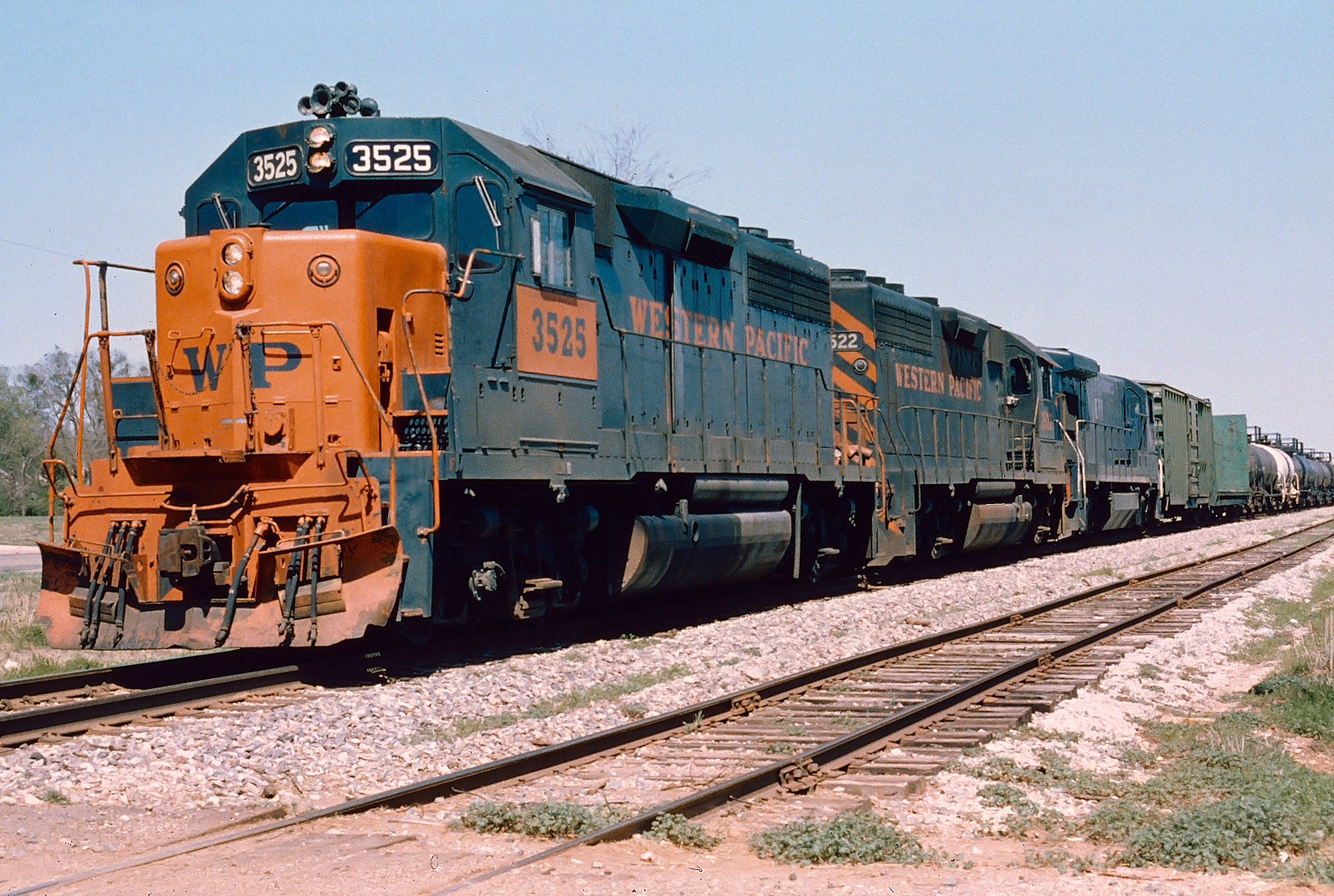 Just a few years after the Union Pacific takeover, a pair of former Western Pacific GP40's and a MoPac GE lead a general manifest at Palestine, Texas; February 18, 1984. Mike Bledsoe photo. American-Rails.com collection.
Just a few years after the Union Pacific takeover, a pair of former Western Pacific GP40's and a MoPac GE lead a general manifest at Palestine, Texas; February 18, 1984. Mike Bledsoe photo. American-Rails.com collection.Under Amtrak, Texas has retained a number of the famous passenger trains that existed prior to the carrier.
For instance Southern Pacific’s Sunset Limited still runs between New Orleans and Los Angeles and Missouri Pacific’s Texas Eagle still makes several stops in the state including San Antonio, Dallas, and Austin (at San Antonio you can jump on board the Sunset Limited to Los Angeles or New Orleans and vice-versa).
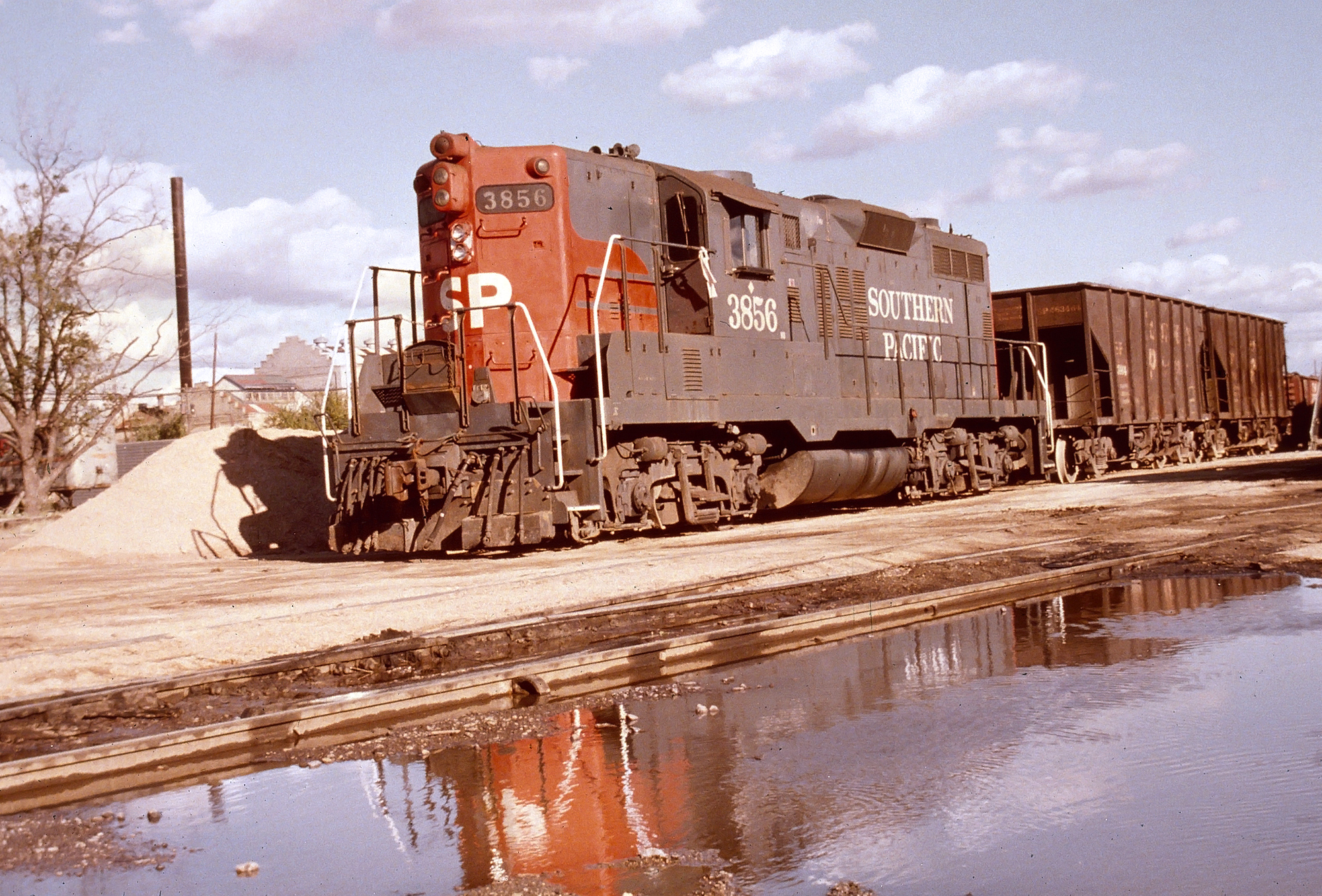 Southern Pacific GP9R #3856 is seen here tied down in Austin, Texas on November 2, 1980. Mike Bledsoe photo. American-Rails.com collection.
Southern Pacific GP9R #3856 is seen here tied down in Austin, Texas on November 2, 1980. Mike Bledsoe photo. American-Rails.com collection.Railroad Museums and Attractions
Lastly, if you are an avid railroad historian or enjoy excursion trains, then you’ll love what Texas has to offer!
For instance, there is the Austin Steam Train Association which operates excursion trains behind historic Alco diesels (complete in Southern Pacific “Black Widow” livery) and an ex-Southern Pacific Mikado (2-8-2) steam locomotive.
And then there is the Galveston Railroad Museum, one of the finest in the state that features plenty of historic equipment and interactive exhibits.
Altogether, Texas railroads are as grand as the Lone Star State itself and truly are Like A Whole Other Country. With over 10,000 miles of rails, whether you are interested in high speed, main line freight operations, local short lines or just a good museum you should have no problem finding it in Texas.
Contents
Recent Articles
-
Florida Railroad Museums: A Complete Guide
Apr 17, 25 04:48 PM
Florida is home to many railroad museums preserving the state's rail heritage, including an organization detailing the great Overseas Railroad. -
Delaware Railroad Museums: A Complete Guide
Apr 17, 25 04:23 PM
Delaware may rank 49th in state size but has a long history with trains. Today, a few museums dot the region. -
Arizona Railroad Museums: A Complete Guide
Apr 16, 25 01:17 PM
Learn about Arizona's rich history with railroads at one of several museums scattered throughout the state. More information about these organizations may be found here.
